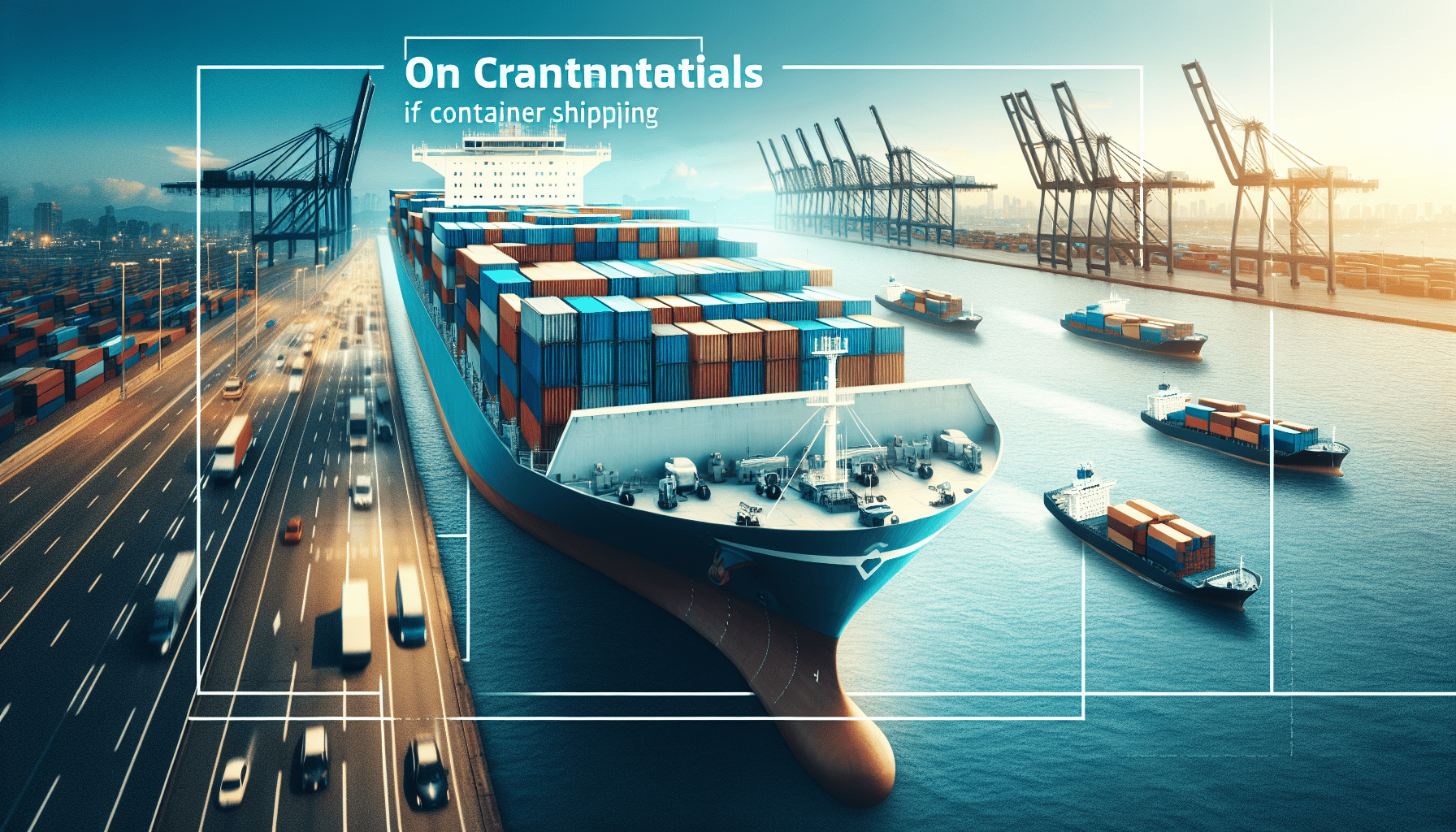If you’ve ever wondered about the cost of shipping a 40 ft container, look no further! In this article, we’ll explore the various factors that affect shipping costs and provide you with an estimate so that you can better plan your logistics. Whether you’re a business owner expanding overseas or an individual relocating to a different country, understanding shipping costs is essential. So, let’s get started and embark on this journey to uncover the price of shipping a 40 ft container. Shipping costs can vary widely depending on a number of factors. In this article, we will explore the various factors that can affect shipping costs, the average cost of shipping a 40 ft container, additional fees and charges that may be incurred, and some cost-saving tips to help you optimize your shipping expenses.

Factors Affecting Shipping Costs
Distance
The distance between the origin and destination of your shipment plays a significant role in determining the shipping costs. Longer distances generally result in higher costs due to increased fuel consumption and transportation time.
Mode of Transportation
The mode of transportation you choose can also impact the shipping costs. There are several options available including air freight, sea freight, and road transport. Air freight is typically the most expensive option but offers faster delivery times. Sea freight is often the more cost-effective choice for larger shipments like 40 ft containers.
Shipping Route
The specific route taken by your shipment can affect the overall shipping costs. Some routes may have higher charges or require multiple transfers, which can add to the expenses. It’s important to consider the efficiency and reliability of the shipping routes available to you when determining the cost of shipping.
Container Type
The type of container you choose to ship your goods can influence the overall shipping costs. A 40 ft container is a popular choice for shipping larger quantities of cargo. However, other container options, such as 20 ft containers or specialized containers for fragile or perishable goods, may have different costs associated with them.
Shipping Company
The shipping company you select will also impact the cost of shipping your 40 ft container. Different companies have varying pricing structures, service levels, and reputations. It is important to carefully research and compare shipping companies to find the one that offers the best balance of cost and reliability for your specific needs.
Average Cost of Shipping a 40 ft Container
International Shipping
When it comes to international shipping, multiple factors come into play when determining the average cost of shipping a 40 ft container. Some common expenses you can expect to encounter include freight charges, documentation fees, terminal handling charges, and customs brokerage fees.
Additionally, you may need to consider import duties and taxes imposed by the destination country. These charges can vary greatly depending on the commodity being shipped and the import regulations of the specific country.
It is important to note that international shipping costs for a 40 ft container can range anywhere from a few thousand dollars to tens of thousands of dollars. The specific cost will depend on the factors we have discussed earlier.
Domestic Shipping
Domestic shipping costs typically involve fewer variables compared to international shipping. However, the cost of shipping a 40 ft container domestically can still vary depending on the distance, mode of transportation, and the shipping company you choose.
For domestic shipments, trucking is often the primary mode of transport for 40 ft containers. Factors such as fuel costs, driver wages, and maintenance can impact the overall shipping costs. It is always a good idea to obtain multiple quotes from different trucking companies to compare prices and services.
Additional Fees and Charges
Port Charges
Port charges refer to the fees imposed by the port authorities for the use of their facilities and services. These charges can include berth fees, handling fees, and storage fees. The specific port charges you may encounter will depend on the ports of departure and arrival, as well as the services utilized.
Customs Fees
When shipping goods internationally, customs fees are additional charges imposed by the customs authorities of the destination country. These fees are assessed to cover the costs of processing and inspecting imported goods. Customs fees can vary widely depending on the commodity being shipped and the regulations of the destination country.
Insurance
Insurance is an essential consideration when shipping valuable or delicate cargo. While insurance is not a mandatory cost, it is highly recommended to protect your goods from damage, loss, or theft during transit. The cost of insurance will depend on the value of the goods being shipped and the level of coverage you require.
Storage Fees
In some cases, storage fees may be incurred if the shipment is not picked up or delivered within a specified timeframe. These fees are usually charged on a daily or weekly basis and can add up quickly if the goods remain in storage for an extended period.
Cost-saving Tips
Compare Quotes
One of the most effective ways to save on shipping costs is to compare quotes from different shipping companies. Each company has its own pricing structure and service offerings, so it is important to obtain multiple quotes to ensure you are getting the best deal. Consider factors such as transit time, reliability, and customer reviews in your decision-making process.
Choose Less Popular Ports
Opting for less popular ports of departure or arrival can often result in lower shipping costs. Popular ports tend to have higher demand and congestion, which can drive up prices. Exploring alternative port options can help you find more affordable shipping solutions.
Optimize Container Space
Making the most of the available space in your 40 ft container can help reduce shipping costs. Properly packing and organizing your cargo can minimize wasted space, allowing you to maximize the amount of goods shipped in a single container. Utilize padding materials, stack efficiently, and ensure proper weight distribution to optimize container space and potentially save on shipping expenses.
In conclusion, the cost of shipping a 40 ft container can vary significantly depending on factors such as distance, mode of transportation, shipping route, container type, and the shipping company you choose. Understanding these factors and considering additional fees and charges can help you accurately estimate and plan for your shipping expenses. By implementing some cost-saving tips such as comparing quotes, choosing less popular ports, and optimizing container space, you can minimize your shipping costs without compromising on the quality and reliability of your shipment.


I am James, the creator behind SeaBoxInnovations.com. Welcome to our premier online destination dedicated to the world of sea containers. Think Inside the Box is our tagline, and our website is your go-to source for exploring the endless potential of these versatile and adaptable containers. Whether you’re interested in purchasing, customizing, or learning about the latest trends in container architecture and design, we have you covered. Join us as we bridge the gap between traditional uses and cutting-edge applications, promoting sustainability and innovation in design and construction. Get ready to embark on your next big project with SeaBoxInnovations.com.

